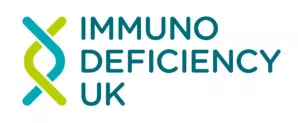Summary
Immunoglobulin G (IgG) is the main type of immunoglobulin (also called antibody) in the blood and helps the body to fight bacterial infections and prevent viral infections. It is made up of four different types called IgG subclasses, known as IgG1, IgG2, IgG3 and IgG4 which have different roles in the body. Having one or more of these subclasses may result in IgG subclass deficiency – a group of conditions where there is a low level of one or more of these IgG subclasses in the blood, but where measured levels of all the major immunoglobulins (IgA, IgM and also, frequently, the total amount of IgG itself) are normal. IgG subclass deficiency may also occur in conjunction with IgA deficiency. IgG subclass deficiencies belong to a family of conditions known as primary antibody immunodeficiencies.
People with IgG subclass deficiency may suffer from infections or may be completely healthy. Infections may be recurrent and mainly involve the respiratory system, usually the ears, nose and throat, but the severity of symptoms varies widely from patient to patient. In some people, low levels or even complete absence of an IgG subclass is not associated with any increased incidence of infection. In others, a low IgG1, IgG2 or IgG3 subclass level may be the only detectable abnormality in the context of a significant history of infections. This has led to a continuing debate and uncertainty among immunologists about the significance of individual IgG subclass deficiencies.
IgG subclass levels are lower in children and levels increase naturally to normal over time without the need for medical intervention. Diagnosis of clinically significant IgG subclass deficiency depends on careful evaluation of individuals and their test results, including how well the patient’s immune system responds to different types of vaccines (immunisation).
The outlook for patients with selective IgG subclass deficiency is generally good. Low IgG subclass levels in children are very likely to improve with age and return to normal by around the age of 10–12 years. Treatment (where necessary) in most children requires only occasional use of antibiotics to clear infections as they occur; in more severe infections, antibiotics are used on a continuous basis to prevent infections taking hold. For patients with a persistent deficiency and significant documented infections, immunoglobulin replacement therapy may be used in certain circumstances to prevent serious infections and complications, such as impaired lung function, hearing loss or injury to other organ systems.
In occasional cases, particularly where there is associated IgA deficiency, selective IgG subclass deficiency may develop or evolve into a more serious kind of antibody deficiency, such as common variable immune deficiency (CVID). It is not yet possible to tell which patients will have the transient type of subclass deficiency and which patients may later develop a more significant immunodeficiency. For these reasons, doctors will want to evaluate a patient’s immunoglobulin levels and their function regularly and over a lengthy period.





